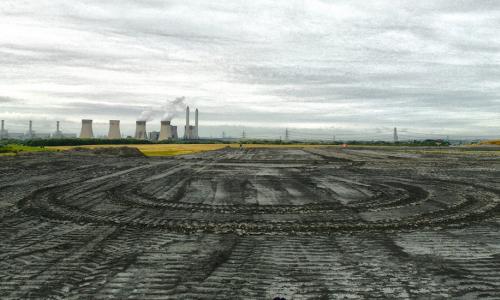Since 9/11, the specter of a terrorist attack at the Indian Point nuclear power plant, thirty-five miles upwind from midtown Manhattan, has caused great concern for residents of the New York metropolitan area. Although the Nuclear Regulatory Commission (NRC) ordered modest security upgrades at Indian Point and other nuclear power plants in response to the 9/11 attacks, the plants remain vulnerable, both to air attacks and to ground assaults by large terrorist teams with paramilitary training and advanced weaponry. Many question whether the NRC's security and emergency planning requirements at Indian Point are adequate, given its attractiveness as a terrorist target and the grave consequences for the region of a successful attack.
This report presents the results of an independent analysis of the health and economic impacts of a terrorist attack at Indian Point that results in a core meltdown and a large radiological release to the environment. We find that, depending on the weather conditions, an attack could result in as many as 44,000 near-term deaths from acute radiation syndrome or as many as 518,000 long-term deaths from cancer among individuals within fifty miles of the plant. These findings confirm that Indian Point poses a severe threat to the entire New York metropolitan area. The scope of emergency planning measures should be promptly expanded to provide some protection from the fallout from an attack at Indian Point to those New York area residents who currently have none. Security at Indian Point should also be upgraded to a level commensurate with the threat it poses to the region.
A 1982 study by Sandia National Laboratories found that a core meltdown and radiological release at one of the two operating Indian Point reactors could cause 50,000 near-term deaths from acute radiation syndrome and 14,000 long-term deaths from cancer. When these results were originally disclosed to the press, an NRC official tried to reassure the public by saying that the kind of accident the study considered would be less likely than "a jumbo jet crashing into a football stadium during the Superbowl."
In the post-9/11 era, the possibility of a jumbo jet crashing into the Superbowl—or even a nuclear power plant—no longer seems as remote as it did in 1982. Nonetheless, NRC continues to argue that the 1982 Sandia report is unrealistic because it focused on "worst-case" accidents involving the simultaneous failure of multiple safety systems, which are highly unlikely to occur by chance. But when the potential for terrorist attacks is considered, this argument no longer applies. "Worst-case" scenarios are precisely the ones that terrorists have in mind when planning attacks.
Both NRC and Entergy, the owner of Indian Point, assert that even for the most severe terrorist attack, current emergency plans will be adequate to protect residents who live in the evacuation zone within ten miles of the plant. They also say that there will be no significant radiological impact on New York City or any other location outside of the ten-mile zone. Accordingly, NRC has opposed proposals made after 9/11 to extend the emergency planning zone around Indian Point. However, NRC and Entergy have not provided the public with any documentation of the assumptions and calculations underlying these claims.
In view of the lack of public information available on these controversial issues, we carried out an independent technical analysis to help inform the debate. Our calculations were performed with the same state-of-the-art computer code that NRC uses to assess accident consequences. We used the NRC's guidance on the radiological release from a core meltdown, current estimates of radiation risk, population data from the 2000 census, and the most recent evacuation time estimate for the ten-mile Indian Point emergency planning zone. Following the format of the 1982 Sandia report, we calculated the numbers of near-term deaths from acute radiation syndrome, the numbers of long-term deaths from cancer, and the maximum distance at which near-term deaths can occur. We evaluated the impact of both evacuation and sheltering on these outcomes. We also estimated the economic damages due to the long-term relocation of individuals from contaminated areas, and the cost of cleanup or condemnation of those areas.
The health and environmental impacts of a large radiological release at Indian Point depend strongly on the weather conditions. We have carried out calculations for over 140,000 combinations of weather conditions for the New York area and wind directions for the Indian Point site, based on a year's worth of weather data. For this data set, we have determined the average consequences, the peak consequences, and the consequences for "95th percentile" weather conditions (in other words, only five percent of the weather sequences analyzed resulted in greater consequences).
We believe that the 95th percentile results, rather than the average values, represent a reasonable assessment of the likely outcome of a successful terrorist attack, since such attacks would most likely not occur at random, but would be timed to coincide with weather conditions that favor greater casualties. Attacks capable of causing the peak consequences that we calculate would be difficult to achieve because of inaccuracies in weather forecasts, restricted windows of opportunity and other factors, but remain within the realm of possibility.
For a successful attack at one of the two operating Indian Point reactors, we find that
- The number of near-term deaths within 50 miles, due to lethal radiation exposures received within seven days after the attack, is approximately 3,500 for 95th percentile weather conditions, and approximately 44,000 for the worst case evaluated. Although we assumed that the ten-mile emergency planning zone was entirely evacuated in these cases, this effort was inadequate because (according to Entergy's own estimate) it would take nearly nine and one half hours to fully evacuate the ten-mile zone, whereas in our model the first radiological release occurs about two hours after the attack.
- Near-term deaths can occur among individuals living as far as 18 miles from Indian Point for the 95th percentile case, and as far as 60 miles away in the worst case evaluated. Timely sheltering could be effective in reducing the number of near-term deaths among people residing outside of the ten-mile emergency planning zone, but currently no formal emergency plan is required for these individuals.
- The number of long-term cancer deaths within 50 miles, due to non-acutely lethal radiation exposures within seven days after the attack, is almost 100,000 for 95th percentile weather conditions and more than 500,000 for the worst weather case evaluated. The peak value corresponds to an attack timed to coincide with weather conditions that maximize radioactive fallout over New York City.
- Based on the 95th percentile case, Food and Drug Administration guidance would recommend that many New York City residents under 40, and children in particular, take potassium iodide (KI) to block absorption for radioactive iodine in the thyroid. However, there is no requirement that KI be stockpiled for use in New York City.
- The economic damages within 100 miles would exceed $1.1 trillion for the 95th percentile case, and could be as great as $2.1 trillion for the worst case evaluated, based on Environmental Protection Agency guidance for population relocation and cleanup. Millions of people would require permanent relocation.
We hope that this information will be useful to Federal, State and local homeland security officials as they continue to develop plans to protect all those at risk from terrorist attacks in the post-9/11 world.



